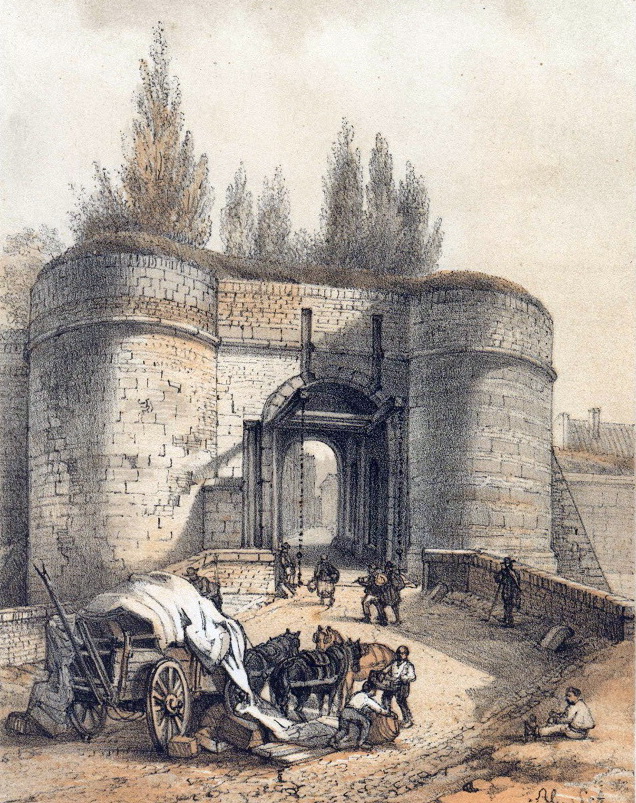The development of our city gates
A gate in a fortress wall is by definition actually a problem. With the fortress wall, the defender tries to close off the city and make it defensible against a possible enemy. Then you would rather not have a hole in the wall. But people and goods have to get in and out of the city and as a result the city gate is a 'necessary evil'. By making provisions around the hole in the wall, a defender can limit the damage.
Tongersepoort (model on the left)
 The Tongersepoort looks very different from the Helpoort, but in its origin it was the same kind of gate. However, unlike the Helpoort, it served until the abolition of the fortress in 1867. The Helpoort, on the other hand, was no longer part of a defensible wall at the end of the fifteenth century because new walls had been built outside the gate. The Tongersepoort has therefore fully experienced the stormy development of the fire artillery in the fifteenth and sixteenth centuries and has therefore been adapted to the new demands made on fortifications. After all, they had to be able to withstand cannon fire and provide space for defensive artillery.
The Tongersepoort looks very different from the Helpoort, but in its origin it was the same kind of gate. However, unlike the Helpoort, it served until the abolition of the fortress in 1867. The Helpoort, on the other hand, was no longer part of a defensible wall at the end of the fifteenth century because new walls had been built outside the gate. The Tongersepoort has therefore fully experienced the stormy development of the fire artillery in the fifteenth and sixteenth centuries and has therefore been adapted to the new demands made on fortifications. After all, they had to be able to withstand cannon fire and provide space for defensive artillery.
As part of those adjustments, the Tongersepoort lost its entire superstructure. The two towers were demolished to the level of the adjacent city wall. They were also reinforced and filled with earth, creating a platform on top for deploying defensive guns. The spaces above the gate passage were also demolished. As the last remnant of those spaces, an 'organ house' remained for some time, a covered space from which the portcullis was operated. From the middle of the sixteenth century, outworks were built in front of the city gates. In this way the gates were no longer positioned in the first attack front during an attack on the fortress and gradually lost their defensive function.
In this model you see one exterior in the form of a ravelin in front of the Tongersepoort, but you can see the same gate with all the exteriors in front of it one floor higher, at the bottom left of the model that is attached to the wall.
Jos Notermans
October 2, 2021





